The right gear, skills and good fishing sense – it’s all good to have. But if you can’t attract fish in a realistic way, then you’ll have to rely on the old standby: luck, which is also good, but a lot more fickle.
Freshwater Bait
Good freshwater natural fishing baits include worms, leeches, minnows, crayfish, crickets and grasshoppers. Freshwater bottom-feeders like catfish and carp are also attracted to cut fishing baits (cut-up bait fish) and prepared baits called dough balls.
CUT FISHING BAIT

Using fish cut into pieces attracts fish in a different way than whole, live fishing bait or lures. Fish that are attracted to scent are more likely to hit on cut bait. You can use any caught fish, including bait fish, to make cut bait. For best results, scale the fish but leave the skin on. Catfish and carp bite on cut fishing bait.
Many species of saltwater fish like sea trout, bluefish and sailfish are attracted to cut bait.
LEECHES

Leeches are excellent live fishing bait for freshwater walleye and northern pike, and are readily available from bait shops. Leeches should be hooked through the sucker in the tail. Leeches have suckers at both ends. But the tail sucker disk is larger than the head disk.
There is a simple rule of thumb when using leeches as live fishing bait. Don't fish them faster than they can naturally swim. The attraction is the swimming motion.
If you're placing leeches in your live well, give them at least one hour to adjust to the new temperature. So they can stretch out and swim naturally. Leeches are hardy and will last a long time. You can keep them fresh in a refrigerator for many days.
DOUGH BALLS

The fancy name is prepared fishing bait. They're commercially made, come in a can and are labeled for specific fish, such as trout, pan fish, catfish and carp. Mold the stuff all the way around the hook, including the barb or use it on a treble hook with a bait holder attachment.
You can also make your own dough balls. Try the recipe below.
A tasty treat for catfish and carp:
①Mix 1 cup flour, 1 cup yellow cornmeal and 1 teaspoon sugar in a bowl.
②Take a 1-quart container of water and pour just enough of it into the mixture to make a heavy dough.
③Roll the dough into balls about ½-inch to 1-inch in diameter.
④Mix the rest of the water with 1 cup of molasses and pour it into a pan.
⑤Add a flavoring agent, such as garlic, licorice, anise or strawberry gelatin.
⑥Put the pan on the stove and bring the molasses, water and flavoring to a boil.
⑦When the mixture is boiling, drop in the dough balls, but don't overcrowd them.
⑧Cook for 2 to 3 minutes. Cool before using.
GRUBS AND MEAL WORMS
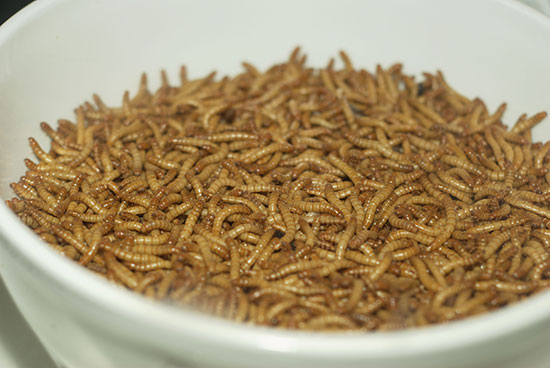
Ideal for pan fish, sunfish and trout, grubs and meal worms are used often as live fishing bait and are readily available from tackle and bait shops. Use them singly or in multiples.
You can also harvest grubs from the soil and from the swelled and deformed leaves of trees, plants and vegetables.
MINNOWS
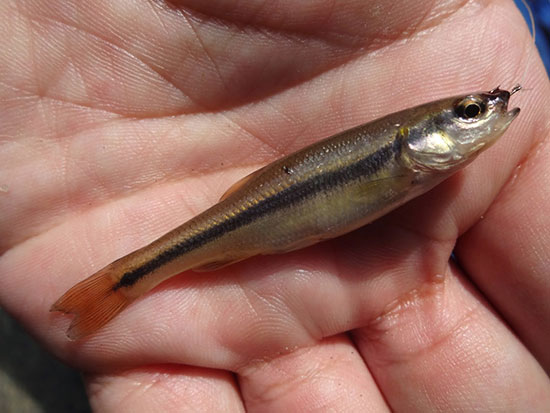
Basically, minnows are baby fish and a good all-around freshwater fishing bait. Minnows are readily available from bait and tackle shops or you can catch your own if it's legal in your area. Minnows come in different sizes. Use larger 'shiners' for bass and pike fishing.
For cast and retrieve, trolling and drifting, hook the minnow vertically through both lips or through the tail.For still fishing with a bobber, hook the minnow through the back just above the dorsal fin. Take care not to damage the spinal cord. The key is to keep the fish moving on its own.
For really good action, hook the minnow upside down on a light jig. It will struggle to regain an upright position
Store minnows in a minnow bucket using the same water from which they were bought or captured, and take care not to crowd them.
INSECTS
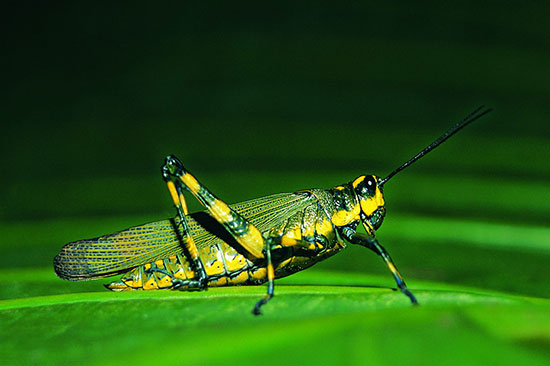
Ants, beetles, grasshoppers, crickets and caterpillars are ideal to use as live fishing bait for catching pan fish, sunfish and trout. Brown trout are especially attracted to ants presented on a fly. Smallmouths and large trout prefer immature versions of mayflies, stoneflies, caddis, hellgrammites and dobsonfly larvae.
You can buy insects or catch your own. Ants can be gathered from a nest and large insects can be captured with a net. Hey, get the whole family involved.
FRESHWATER CLAMS AND MUSSELS
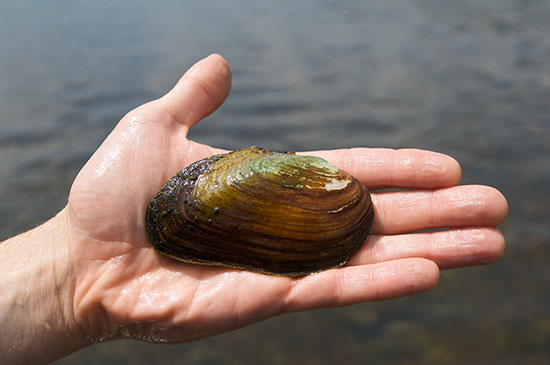
If clams or mussels are native to your area, they make a great live bait to catch the native fish.
To keep them fresh, gather the mussels and clams from shallow waters before or while you fish. Crack the shell open, cut out the clam or mussel and allow the bait to harden slightly in the sun so it stays on the hook. Tie mussels on to the hook with thread, taking care not to pull too tight.
CRAYFISH
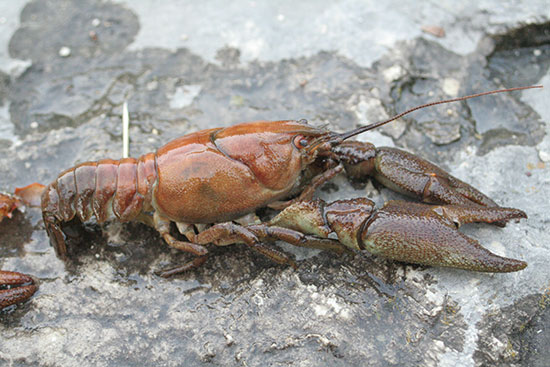
For smallmouth bass, use crayfish whole and alive, hooked through the tail. For pan fish use the tail meat or meat from the large pincers. For catfish, bullheads and carp, use dead crawdads threaded on a hook.
Crayfish can be bought from bait stores or captured by using a window screen or fine mesh net in the water. Stir the water to chase the crayfish into the net. Store in moist rags, damp moss or a bait bucket.
Cut Fishing Bait for Trolling
Use the thin belly area and cut long v-shaped strips to simulate a fish or eel. Include a pectoral or pelvic fin on the bait to increase the attractiveness to the fish. If necessary, scale the fish strip but thread the hook through the skin to help keep the bait intact.
Prepared Fishing Baits
For catfish, carp and crappies, you can buy a paste-like mixture of dough, blood, cheese and other proteins or make your own. Mold the stuff all the way around the hook, including the barb. Or use it on a treble hook with a bait holder attachment.
Freshwater Worms
Worms are a good bait for nearly all freshwater fishing. You can find enough worms for fishing from a few shovels of dirt in your garden or from a shaded, damp area. Worms can also be purchased in fishing tackle stores and bait shops.
For walleyesand bass, use earthworms or night crawlers. For pan fish, sunfish and trout, use smaller manure worms. You can find them in cattle and horse pastures.
Tips and Tricks for Worms
To prevent smaller fish from nibbling the worm without biting down on the hook, you can use just a piece of the worm. If you have small worms, thread the hook through the side of the worm at several places along its body. For bait-stealing fish such as sunfish, thread the worm on the hook until the hook is completely covered.
Catfish Stinkbait
①Fill a jar with pieces of a forage fish like shad.
②Cover the jar with the lid, but leave the lid loose so gases will escape.
③Put the jar in direct sunlight for a day or two.
④Trust us, when you open the jar, you'll know if your catfish stinkbait is ready.
Eels
Eels are especially good used whole when trolling for striped bass. Simply hook them through the eyes or lips or cut the eel into chunks. Eel is tough bait, so you can use it for trolling and bottom fishing.
CURED FISH ROE
Salmon or trout eggs are one of the most effective baits when targeting fish like salmon, steelhead and trout. When spawning fish are active in the streams, rivers, shorelines or harbors they will often ignore any other baits and lures that you try to throw at them. An egg spawn sack (usually a small pouch of cheesecloth with clusters of eggs) or cured skein (cluster of cured eggs) can be attached to your hook and can either be left to float freely or weighted with a small sinker to get the bait deeper. Cured fish roe can be found at most bait and tackle shops or with a little bit more effort, you can make it yourself.
To learn about different types of freshwater fishing lures visit our next section.
Freshwater Lures
There are a lot of fishing lures in a lot of sizes, shapes and colors. As you understand more about the environment fish live in and how they behave, you will learn which fishing bait or lure is best for specific fish during different seasons of the year.
FISHING JIGS

Fishing jigs have weighted metal heads and a tail made of animal hair, soft plastic, feathers or rubber. Anglers sometimes add a minnow or piece of pork rind to the fishing jig's hook. Fishing jigs can be used to catch nearly every kind of freshwater and many saltwater fish.
POPPERS

Poppers are small fishing lures used with spin-castingtackle. These fishing baits are very good for pan fish and other fish that feed on the surface such as trout and bass. Poppers get their action from a cupped face carved or molded into the front of the lure body.
SPOONS

Spoons are metal lures designed to mimic the action of a swimming baitfish or minnow. They’re one of the most popular of all fishing lures because they’re easy to use and are versatile. Depending on where and how you're fishing, you’ll want the right spoon – casting, weedless (or topwater), jigging or trolling spoons. Different spoons have different actions. And there are a variety of colors depending on the type of water and species you’re fishing. Ask your tackle shop which ones you need.
PLUGS

Plugs have a plastic or wood body and are designed to be used on top of the water or at depths below the surface. Topwater or floating plugs are designed to float on the surface. Diving plugs have plastic or metal lips so they will dive to a certain depth. These diving plugs are often called crankbaits because they are often used withbait casting reels that operate like a crank.
SPINNERS

Spinners have one or more blades that spin, or revolve, around a straight wire shaft. Some spinners have tails made of soft plastic or animal hair.
PLASTIC BAITS
Soft-plastic worms, minnows and crayfish are available in many sizes and colors. You can use them with or without a weight. Sometimes, plastic fishing baits are used with a jig head, spinner or spinner bait. Some plastic baits have a scent built into them that is attractive to fish.
SPINNER BAITS
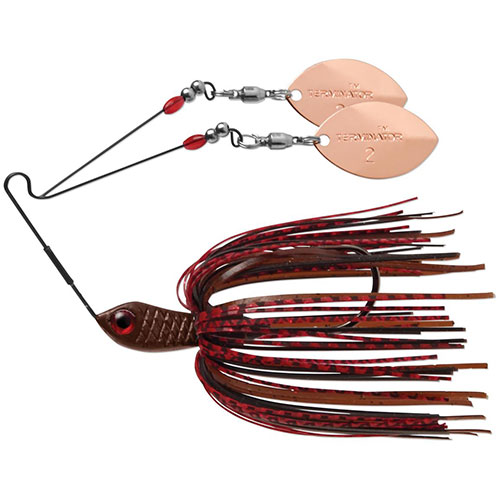
Spinner baits are lures with one or more blades that spin around a safety pin-type shaft. Most spinner baits have skirts made from animal hair, vinyl, rubber or other materials.
SURFACE FISHING LURES
Surface fishing lures are made to imitate things like mice, lizards, frogs, larger crawling insects and smaller injured fish. These fishing lures usually have a solid body made out of wood or plastic, carry one or two treble hooks and have an eyelet at the front to attach your fishing line.
①Waddlers get their action from a scooped metal dish attached to the front of the lure body.
②Fizzers get their action from the angler and from one or more blades attached to the lure body.
③Fizzers get their name from the fizzing noise they create that imitates the buzzing wings of a drowning insect or a freaked-out rodent.
BLADE FISHING LURES
Blade fishing lures are a weighted, fish-shaped blade made with a swinging hook and designed for fishing in deep water.
BUZZ FISHING LURES
These are safety-pin lures for surface fishing that have a propeller blade on one piece of wire and a weighted body, skirt and hook on the other.
CRANK LURES
A crank lure - more commonly known as a crankbait is a fishlike hard lure or plug designed to swim under the surface, often made of plastic or wood. Some are combined with replaceable soft plastic tails.
TUBE LURES
Made of soft plastic, these tubular lures are fished with special weighted hooks inserted into the hollow body.
VIBRATING LURES
Oh, the wonderful world of technology. A vibrating lure contains a tiny motor that sends out a sound-producing vibration to attract fish. The lure body simulates a living creature. A programmed microprocessor is used to randomly operate the motor.
SNAG HOOKS
Snag hooks are heavy duty treble hooks that are weighted with lead around the center shanks of the three treble hooks. They are rarely baited with anything and are cast out into the water then rapidly retrieved back in a jerking motion, hoping to ‘snag’ a fish on the outside of its body. Snag hooks are often used during spawning periods of nuisance fish to control populations. These hooks are sometimes banned in certain states so it is important that all anglers check with their State’s rules and regulations prior to using these hooks.

